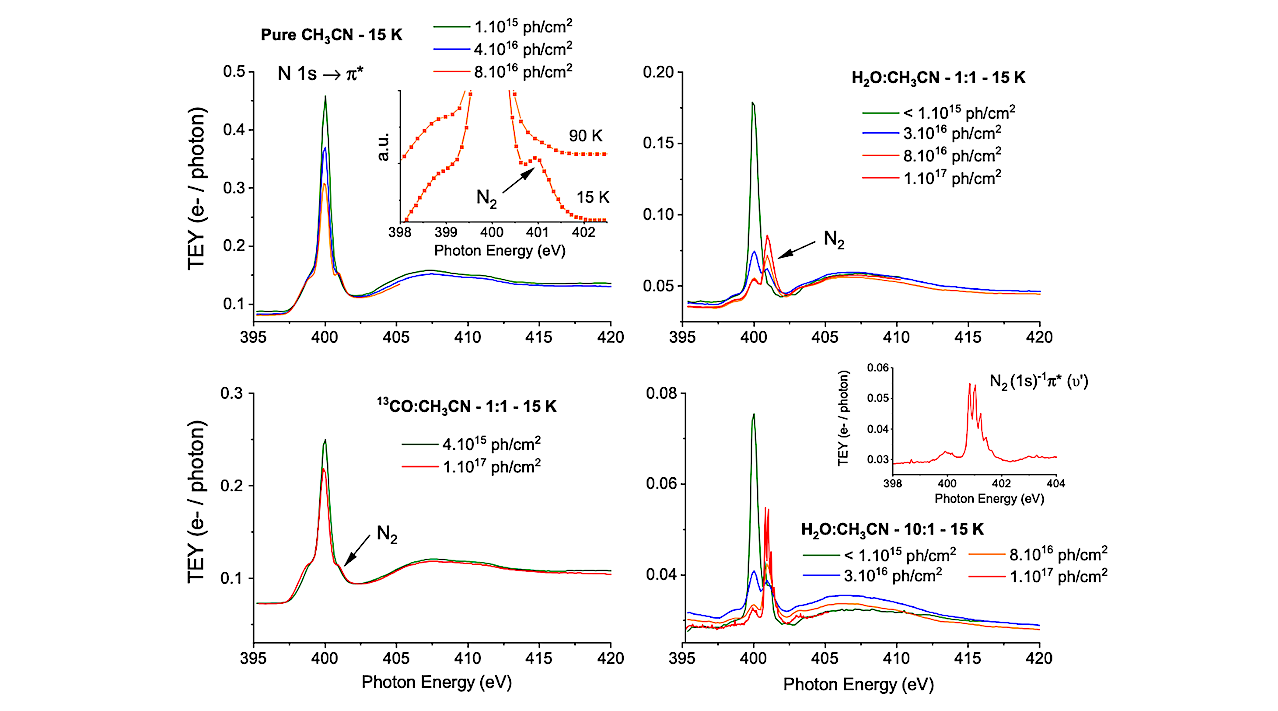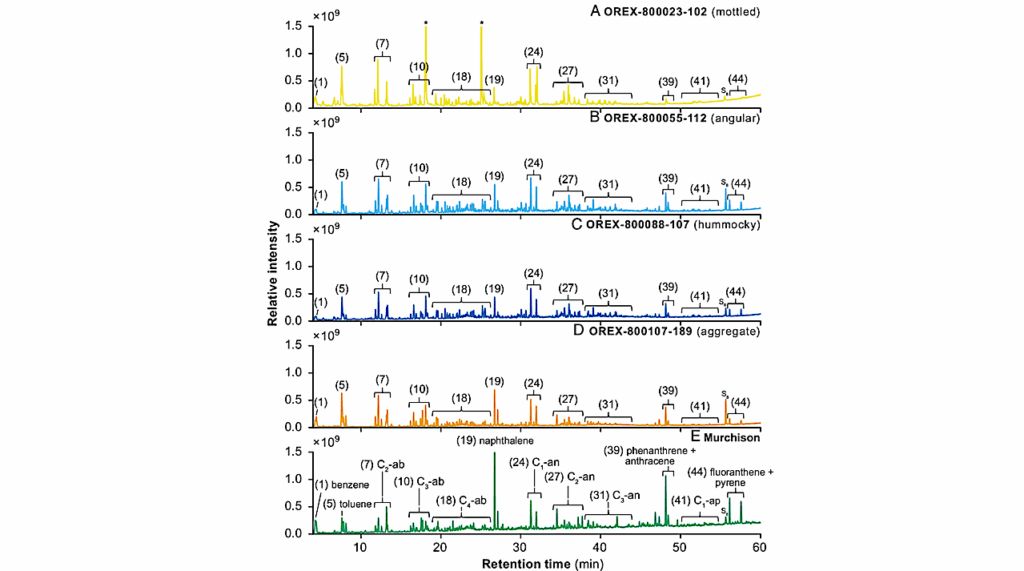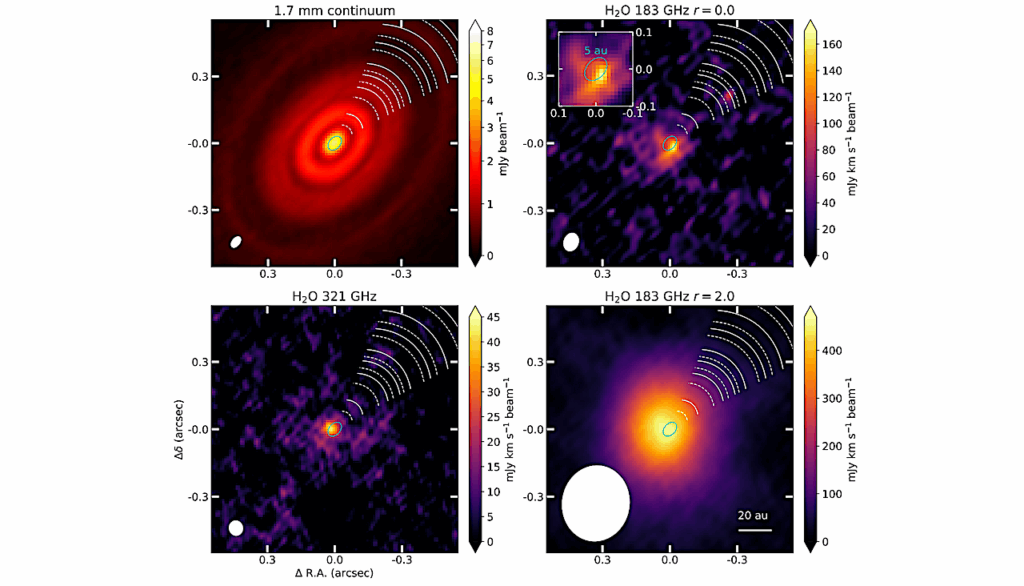X-ray Photodesorption Of Complex Organic Molecules In Protoplanetary Disks — I. Acetonitrile CH3CN

X-rays emitted from pre-main-sequence stars at the center of protoplanetary disks can induce nonthermal desorption from interstellar ices populating the cold regions. This X-ray photodesorption needs to be quantified for complex organic molecules (COMs), including acetonitrile CH3CN, which has been detected in several disks. We experimentally estimate the X-ray photodesorption yields of neutral species from pure CH3CN ices and from interstellar ice analogs for which CH3CN is mixed either in a CO- or H2O-dominated ice.
The ices were irradiated at 15 K by soft X-rays (400-600 eV) from synchrotron light (SOLEIL synchrotron). X-ray photodesorption was probed in the gas phase via quadrupole mass spectrometry. X-ray photodesorption yields were derived from the mass signals and were extrapolated to higher X-ray energies for astrochemical models. X-ray photodesorption of the intact CH3CN is detected from pure CH3CN ices and from mixed 13CO:CH3CN ices, with a yield of about 5×10^(-4) molecules/photon at 560 eV. When mixed in H2O-dominated ices, X-ray photodesorption of the intact CH3CN at 560 eV is below its detection limit, which is 10^(-4) molecules/photon. Yields associated with the desorption of HCN, CH4 , and CH3 are also provided.
The derived astrophysical yields significantly depend on the local conditions expected in protoplanetary disks. They vary from 10^(-4) to 10(-6) molecules/photon for the X-ray photodesorption of intact CH3CN from CO-dominated ices. Only upper limits varying from 5×10^(-5) to 5×10^(-7) molecules/photon could be derived for the X-ray photodesorption of intact CH3CN from H2O-dominated ices. X-ray photodesorption of intact CH3CN from interstellar ices might in part explain the abundances of CH3CN observed in protoplanetary disks. The desorption efficiency is expected to vary with the local physical conditions, hence with the disk region.
R. Basalgète, D. Torres-Díaz, A. Lafosse, L. Amiaud, G. Féraud, P. Jeseck, L. Philippe, X. Michaut, J.-H. Fillion, M. Bertin
Subjects: Instrumentation and Methods for Astrophysics (astro-ph.IM); Astrophysics of Galaxies (astro-ph.GA)
Cite as: arXiv:2306.13048 [astro-ph.IM] (or arXiv:2306.13048v1 [astro-ph.IM] for this version)
Submission history
From: Romain Basalgete
[v1] Thu, 22 Jun 2023 17:17:00 UTC (171 KB)
https://arxiv.org/abs/2306.13048
Astrobiology, Astrochemistry,








